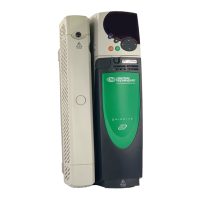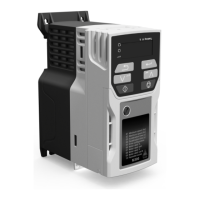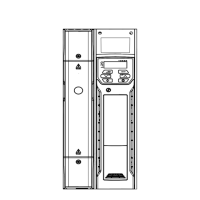Safety
Information
Product
Information
Mechanical
Installation
Electrical
Installation
Getting
Started
Menu 0
Running
the motor
Optimisation Macros
Advanced
Parameters
Technical
Data
Diagnostics
UL Listing
Information
Unidrive User Guide 185
Issue Number: 9 www.controltechniques.com
This parameter defines the low frequency braking time for phase 1 of
stopping during a stop using stopping mode 4 in open loop drives (see
Pr 6.01).
When this bit is set the drive will hold torque at standstill when not in the
running state rather than disabling the output bridge. The drive status will
be 'StoP' when the drive is at standstill rather than 'rdy'.
10.22.5 Mains loss modes
0 diS Disabled
1 StoP Stop
2 ridE.th Ride through
diS (0): Disabled
There is no mains loss detection and the drive operates normally only as
long as the DC Bus voltage remains within specification (above 330V).
StoP (1): Stop (Open loop)
The action taken by the drive is the same as for ride through mode,
except the ramp down rate is at least as fast as the deceleration ramp
setting and the drive will continue to decelerate and stop even if the
mains is re-applied. If normal or timed injection braking is selected the
drive will use ramp mode to stop on loss of the supply. For injection
braking or ramp with DC injection modes, DC current will be applied to
the motor for 1s after it has stopped. (Unless the mains has been
reapplied the drive is likely trip UU before or during the 1s injection
period.)
StoP (1): Stop (Closed Loop)
The speed reference is set to zero and the ramps are disabled allowing
the drive to decelerate the motor to a stop under current limit. If the
mains is re-applied whilst the motor is stopping any run signal is ignored
until the motor has stopped. If the current limit value is set very low the
drive may trip UU before the motor has stopped.
ridE.th (2): Ride through
The drive detects mains loss when the DC Bus voltage falls below a
specific level (410V). The drive then enters a mode where a closed-loop
controller attempts to hold the DC Bus level at a specific level (390V).
This causes the motor to decelerate at a rate that increases as the
speed falls. If the mains is re-applied it will force the DC Bus voltage
above the detection threshold and the drive will continue to operate
normally.
In open-loop mode the output of the mains loss controller is a current
demand that is fed to the frequency changing current controller and
therefore the gain parameters (Pr 4.13 and Pr 4.14) must be set up for
optimum control. See Pr 4.13 and Pr 4.14 below for set-up details.
In closed-loop mode the output of the mains controller is also a current
demand that is fed directly to the current loop. If the settings of Pr 4.13
and Pr 4.14 are suitable for normal operation, they should need no
adjustment. See Pr 4.13 and Pr 4.14 below for set-up details.
Open-loop
These parameters control the proportional and integral gains of the
current controller used in the open loop drive. As already mentioned the
current controller either provides current limits or closed loop torque
control by modifying the drive output frequency. The control loop is also
used in its torque mode during mains loss, or when the controlled mode
standard ramp is active and the drive is decelerating, to regulate the flow
of current into the drive. Although the default settings have been chosen
to give suitable gains for less demanding applications it may be
necessary for the user to adjust the performance of the controller. The
following is a guide to setting the gains for different applications.
Current limit operation
The current limits will normally operate with an integral term only,
particularly below the point where field weakening begins. The
proportional term is inherent in the loop. The integral term must be
increased enough to counter the effect of the ramp which is still active
even in current limit. For example, if the drive is operating at constant
frequency and is overloaded the current limit system will try to reduce
the output frequency to reduce the load. At the same time the ramp will
try to increase the frequency back up to the demand level. If the integral
gain is increased too far the first signs of instability will occur when
operating around the point where field weakening begins. These
oscillations can be reduced by increasing the proportional gain. A
system has been included to prevent regulation because of the opposite
actions of the ramps and the current limit. This can reduce the actual
level that the current limit becomes active by 12.5%. This still allows the
current to increase up to the current limit set by the user. However the
current limit active indicator (Pr 10.09) could become active up to 12.5%
below the current limit depending on the ramp rate used.
Torque control
Again the controller will normally operate with an integral term only,
particularly below the point where field weakening begins. The first signs
of instability will appear around base speed, and can be reduced by
increasing the proportional gain. The controller can be less stable in
torque control mode rather than when it is used for current limiting. This
is because load helps to stabilise the controller, and under torque control
the drive may operate with light load. Under current limit the drive is
often under heavy load unless the current limits are set at a low level.
Mains loss and controlled standard ramp
The DC Bus voltage controller becomes active if mains loss detection is
enabled and the drive supply is lost or controlled standard ramp is being
used and the machine is regenerating. The DC Bus controller attempts
to hold the DC Bus voltage at a fixed level by controlling the flow of
current from the drive inverter into its DC Bus capacitors. The output of
the DC Bus controller is a current demand which is fed into the current PI
controller as showing the following diagram:
6.07 Injection braking time
RW Uni
OL
Ú
0.0 to 25.0 s
Ö
5.0
6.08 Hold zero speed enable
RW Bit
OL
Ú
0 or 1
Ö
0
VT
ÚÖ
SV
ÚÖ
1
6.03 AC supply loss mode selector
RW Txt P
Ú
diS (0), StoP (1), ridE.th (2)
Ö
diS (0)
4.13 Current loop proportional gain
RW Uni
OL
Ú
0 to 30,000
Ö
20
VT
ÚÖ
150
SV
ÚÖ
130
4.14 Current loop integral gain
RW Uni
OL
Ú
0 to 30,000
Ö
40
VT
ÚÖ
2000
SV
ÚÖ
1200
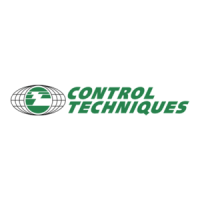
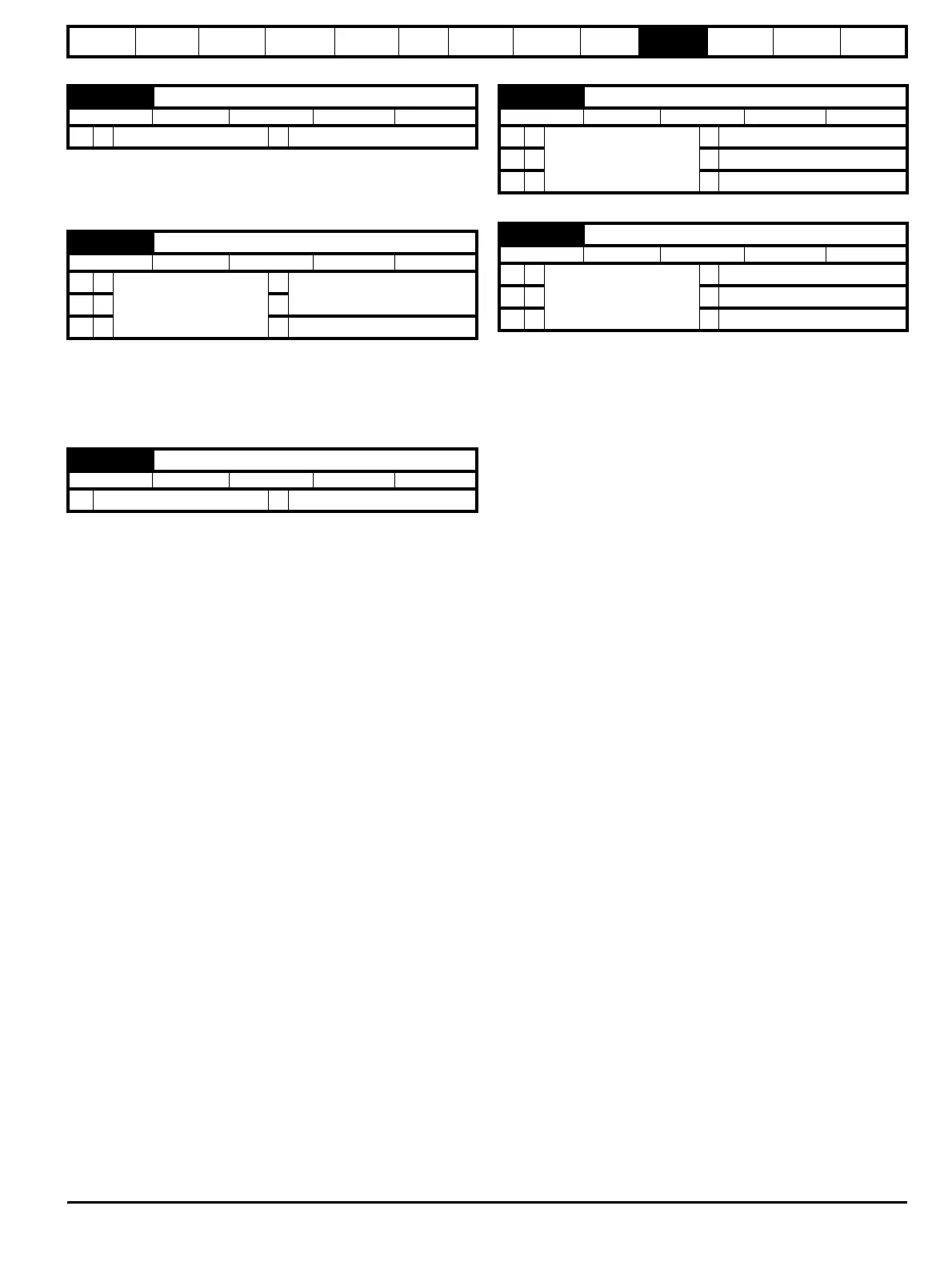